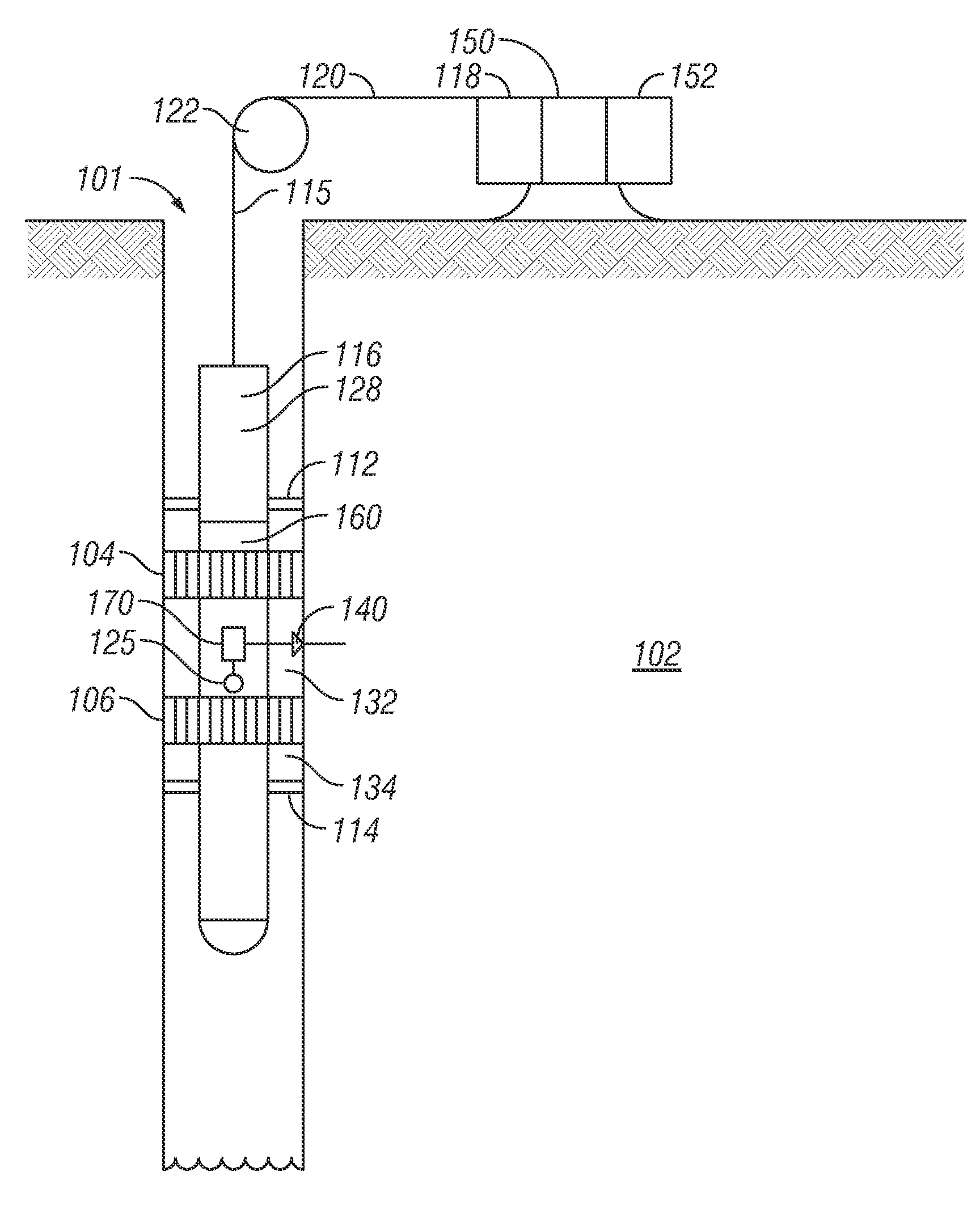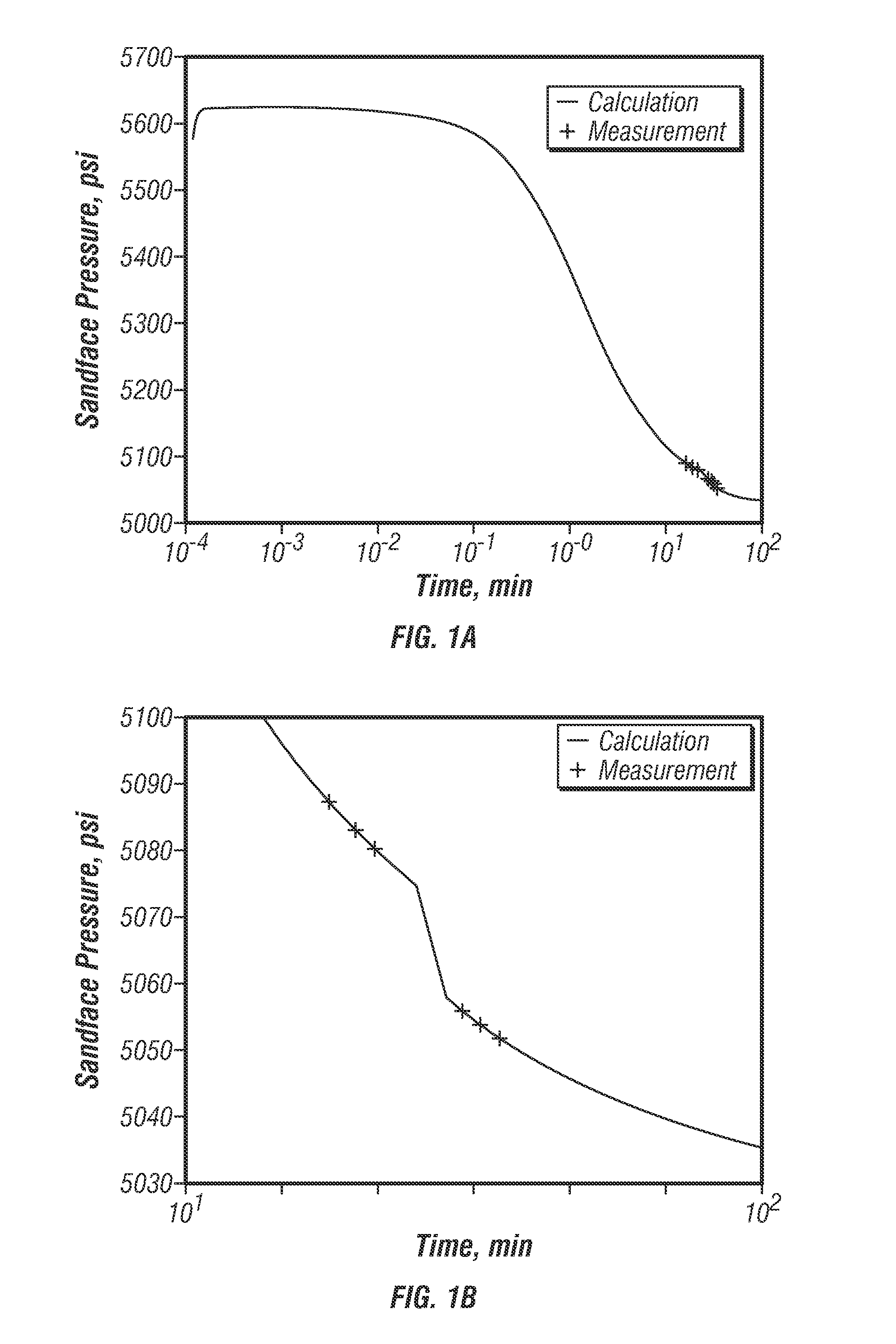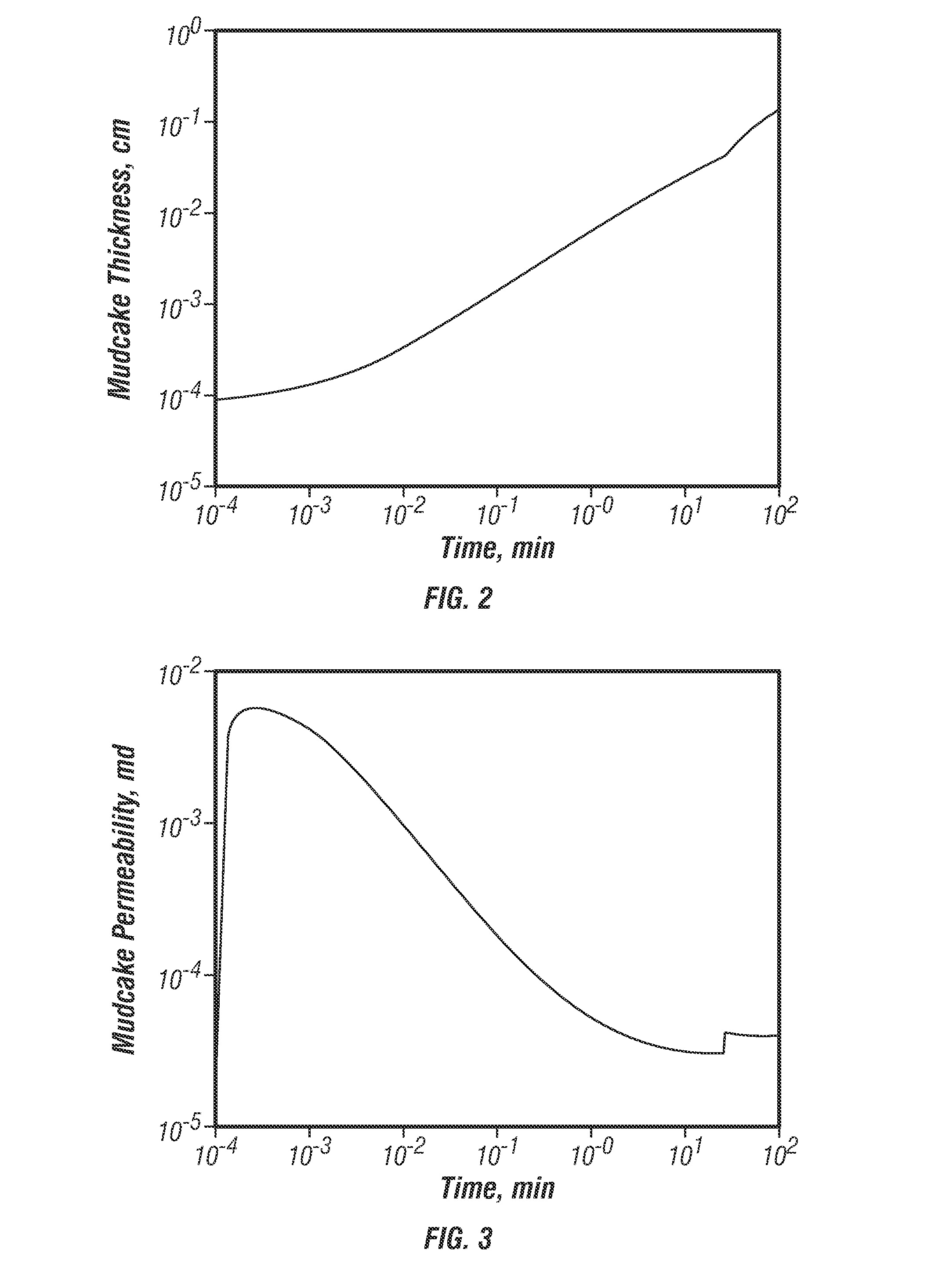System and Method for Estimating Formation Supercharge Pressure
a formation supercharge and pressure technology, applied in the field of formation supercharge pressure estimation, can solve the problems of not necessarily eliminating the supercharge effect, the method is generally not practical,
- Summary
- Abstract
- Description
- Claims
- Application Information
AI Technical Summary
Benefits of technology
Problems solved by technology
Method used
Image
Examples
case 1
Field Case 1
[0036]In the Field Case 1, two scenarios are described. In the first scenario (Scenario 1-A), the first test measurements were made 18 minutes after drilling, using a formation test tool, such as described in reference to FIG. 15 or a tool used during drilling of the well. This is a repeat pressure test case. The first scenario assumes that the actual time-since-drilled is unknown and an arbitrary time-since-drilled (t=18 minutes) is assigned to the time when the build-up pressure of the first test was measured.
[0037]Two sets of three repeat pressure tests were conducted at different hydrostatic pressures. The first set of pressure tests was conducted under 5626 psi hydrostatic pressure, then the hydrostatic pressure was lowered to 5417 psi at t equals 26 minutes, and then a second set of repeat pressure tests was conducted. The measured build-up pressures for the first set of repeat tests were 5087.72, 5083.63, and 5080.66 psi respectively, and the build-up pressures fo...
case 2
Field Case 2
[0044]The second field case relates to a time-lapse repeat testing case for well using a formation testing tool. The testing location depth was at 18,400 ft. Two sets of repeat tests (six tests) were conducted during drilling, and one set of repeat tests (three tests) was re-logged after three days. The three day time-lapse pressure difference was 14 psi due to dissipation of the supercharge pressure.
[0045]The first set of repeat pressure tests was conducted under 4026.7 psi of hydrostatic pressure, then the hydrostatic pressure was dropped to 4023.8 psi, and another three repeat pressure tests were conducted. The measured build-up pressures for the first set of repeat tests were 2850.3, 2849.9, and 2850.2 psi, respectively; and the build-up pressures for the second set of repeat tests were 2843.1, 2841.7, and 2841.2 psi, respectively. This decreasing trend of build-up pressure in repeat tests is believed to be a supercharging effect.
[0046]The objective function uses the...
example 1
Pmh=5626.11 psi, Pss(t1)=5087.72 psi, Pss(t2)=5083.63 psi, and Pss(t3)=5080.66 psi, (t2−t1)=110 second, (t3−t2)=96 second, a and b are calculated to be 0.992461 and 0.987057. C=0.07808, G=0.001056, Pi is estimated to be 5045.68 psi.
PUM
 Login to View More
Login to View More Abstract
Description
Claims
Application Information
 Login to View More
Login to View More - R&D
- Intellectual Property
- Life Sciences
- Materials
- Tech Scout
- Unparalleled Data Quality
- Higher Quality Content
- 60% Fewer Hallucinations
Browse by: Latest US Patents, China's latest patents, Technical Efficacy Thesaurus, Application Domain, Technology Topic, Popular Technical Reports.
© 2025 PatSnap. All rights reserved.Legal|Privacy policy|Modern Slavery Act Transparency Statement|Sitemap|About US| Contact US: help@patsnap.com



